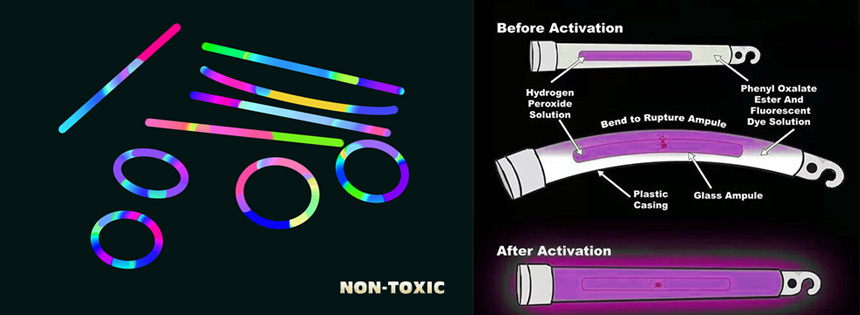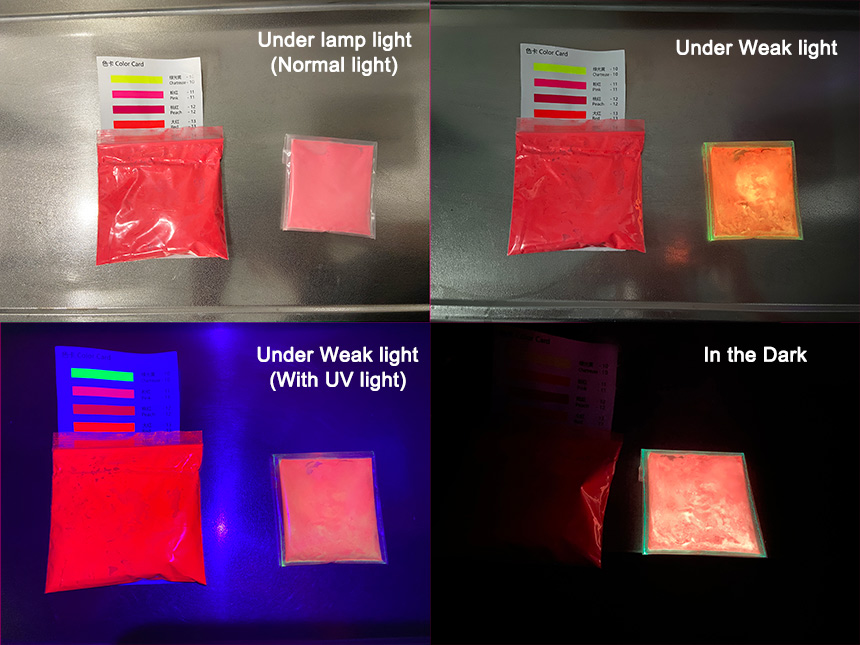What are Fluorescent Pigments?
29 Jun 2023
Shedding Light on How They Emit Light
When it comes to fluorescent pigments, many people are curious about how they emit light.
Let's delve into the fascinating world of these pigments and uncover the science behind their luminescence!
Understanding Pigments: Inorganic and Organic Varieties
Pigments can be categorized into two main types: inorganic fluorescent pigments(such as fluorescent pigments used in fluorescent lamps and anti-counterfeiting fluorescent inks) and organic fluorescent pigments(also known as daylight fluorescent pigments). Only substances with specific chemical structures possess fluorescent properties. However, these fluorescent colorants often come with inherent drawbacks such as poor light fastness and solvent resistance. To overcome these limitations, one approach is to incorporate them chemically or physically into the framework of polymer materials, which are then processed into pigments. The polymer material not only acts as a solvent for the fluorescent colorant but also provides protection, resulting in improved light and solvent resistance.
How do Fluorescent Pigments work?
Fluorescent pigments are functional luminescent pigments that exhibit a unique property. When exposed to external light, including ultraviolet light, these pigments absorb energy and undergo excitation. Instead of converting this energy into heat, they release it in the form of low-visible light, resulting in vibrant fluorescence. This fluorescence makes them appear much brighter during the day compared to other types of pigments. Fluorescent pigments are based on thermosetting resins, boasting high tinting power, excellent fading resistance, extremely fine particle size, and strong solvent resistance. In addition, there are also fluorescent series based on thermoplastic resins, which have high fluorescence, good dispersion performance, and do not contain formaldehyde, heavy metals and aromatic amines. However, it's important to note that fluorescence is different from luminous powder. While luminous powder absorbs light and emits it in the dark, pigments do not glow in the dark. Nevertheless, some customers combine both to create a stunning effect, making their products eye-catching both day and night.
Exploring the World of Fluorescent Dyes
The realm of fluorescent dyes is vast, offering various options for staining different organelles. Examples of fluorescent dyes include DAPI, PI, DIR, JC-1, MitoTracker, and many more. Each dye serves a specific purpose, allowing scientists and researchers to visualize and study cellular components with precision.
Chemical Magic: Glow Sticks Unveiled

Glow sticks are popular items that contain oxalyl esters, a dye, and a glass tube encased in a plastic tube. The glass tube is sealed with hydrogen peroxide in a phthalate solvent. Before use, hydrogen peroxide remains separate from the other compounds, preventing any reaction from occurring. To activate a glow stick, simply bend the small tube containing hydrogen peroxide, causing it to mix with the other components. Upon shaking the glow stick, a chemical reaction takes place. Hydrogen peroxide oxidizes phenyl oxalate, yielding two molecules of phenol and a high-energy reaction intermediate that transfers energy to the dye. The dye, in an electronically excited state, is inherently unstable and returns to the ground state by emitting light. This phenomenon, known as chemiluminescence, is responsible for the glowing effect observed in glow sticks.
Phosphorescent pigments vs. Fluorescent Pigments

It's important to differentiate between phosphorescent pigments(also known as luminous powder, glow in the dark powder) and fluorescent pigments.
Phosphorescent pigments have the unique ability to absorb light energy during the day and store it. They then release this stored energy at night, resulting in a sustained emission of light.
Fluorescent pigments, on the other hand, lack this specific function. Instead, they excel in applications and environments where visibility is crucial. Fluorescent pigments capture users' attention more quickly than their conventionally colored counterparts, making them ideal for creating visual impact.
Fluorescent pigments continue to captivate our imagination with their mesmerizing glow. As researchers and innovators delve deeper into their properties, we can expect further advancements and applications for these remarkable colorants.

